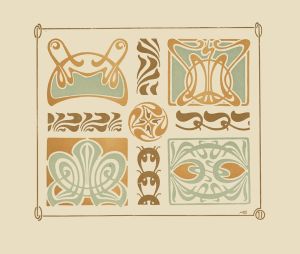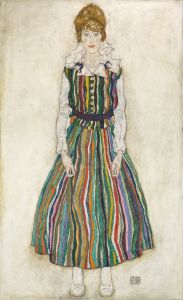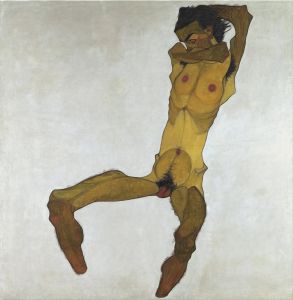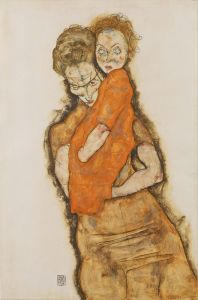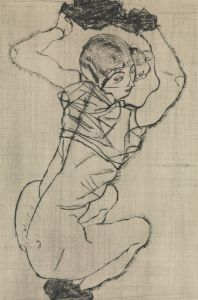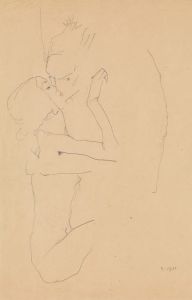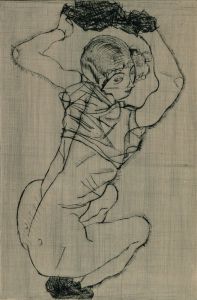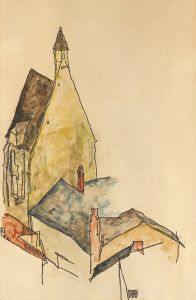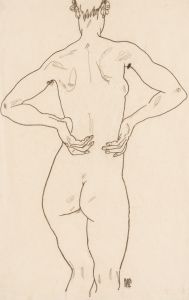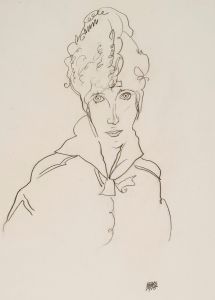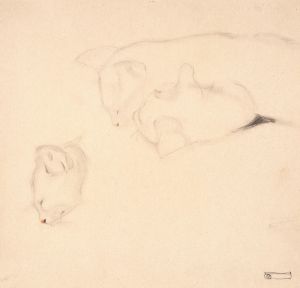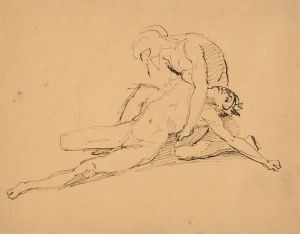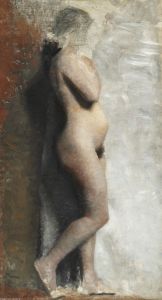
Akt eines stehenden Knaben
A hand-painted replica of Egon Schiele’s masterpiece Akt eines stehenden Knaben, meticulously crafted by professional artists to capture the true essence of the original. Each piece is created with museum-quality canvas and rare mineral pigments, carefully painted by experienced artists with delicate brushstrokes and rich, layered colors to perfectly recreate the texture of the original artwork. Unlike machine-printed reproductions, this hand-painted version brings the painting to life, infused with the artist’s emotions and skill in every stroke. Whether for personal collection or home decoration, it instantly elevates the artistic atmosphere of any space.
Egon Schiele, an Austrian painter known for his distinctive and often provocative style, created the artwork "Akt eines stehenden Knaben" (translated to "Nude of a Standing Boy") during his prolific career in the early 20th century. Schiele, a protégé of Gustav Klimt, was a major figure in the Austrian Expressionist movement, and his works are characterized by their raw emotional intensity and unique approach to the human form.
"Akt eines stehenden Knaben" is a testament to Schiele's fascination with the human body and his ability to convey complex psychological states through his art. The painting features a young male figure, depicted nude, standing in a pose that is both vulnerable and assertive. Schiele's use of line is particularly noteworthy; his bold, almost aggressive strokes outline the boy's form with a precision that highlights both the fragility and the strength of the human body. The figure's elongated limbs and exaggerated proportions are typical of Schiele's style, reflecting his interest in exploring the boundaries of traditional anatomical representation.
The background of the painting is minimalistic, which serves to draw the viewer's focus entirely onto the figure itself. This compositional choice is a hallmark of Schiele's work, as he often employed sparse settings to emphasize the emotional and psychological presence of his subjects. The color palette is subdued, with earthy tones that enhance the somber and introspective mood of the piece.
Schiele's work often stirred controversy due to its explicit content and the artist's unflinching exploration of sexuality and the human condition. "Akt eines stehenden Knaben" is no exception, as it challenges the viewer to confront notions of innocence, vulnerability, and the transition from childhood to adulthood. The painting reflects Schiele's broader thematic concerns, including identity, existential angst, and the complexities of human relationships.
Egon Schiele's career was tragically cut short when he died in 1918 at the age of 28, a victim of the Spanish flu pandemic. Despite his brief life, Schiele left behind a substantial body of work that continues to influence artists and captivate audiences worldwide. His paintings, including "Akt eines stehenden Knaben," are celebrated for their emotional depth and innovative approach to form and composition.
Today, Schiele's works are held in high esteem and are featured in major art collections and exhibitions around the world. "Akt eines stehenden Knaben" is a significant piece within his oeuvre, exemplifying the artist's skill in capturing the essence of his subjects with both sensitivity and intensity. Schiele's legacy endures as a testament to his unique vision and his ability to push the boundaries of artistic expression during a time of great cultural and social change in Europe.





